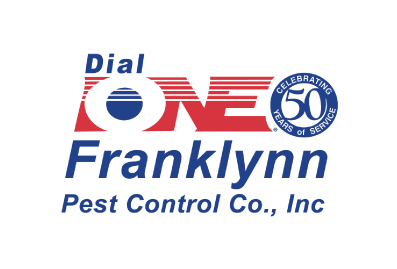As warmer weather approaches in New Orleans, so is the time for many termite species to swarm. This is between Mother's Day and Father's Day that we typically see termite swarms. Termites love warm and moist places, so with the humidity and heat picking up in New Orleans, this is perfect for these pests to come out and find a new place.
As the number of infestations in New Orleans increases, many homeowners worry about termites and what they can do to their homes. If you are amongst those who suffer from termite infestations in New Orleans, then this blog is for you.
We've included the common signs of termite infestation you can look for, which termites are active in the New Orleans area, and how you can protect your home from them.
Types of Termites in Louisiana
New Orleans, Metairie, Kenner, and other places in Louisiana have several termite species. Homeowners from these areas should be familiar with the termites that might attack their homes.
Here are the three types of termites that are active in Louisiana during termite swarm season:
Native Subterranean Termites
These are the most common termites in Louisiana. They are known to infest and snack on paper products and cellulose-based materials. Reticulitermes are commonly seen as black and about one-third of an inch long. They are seen active anywhere between February and March. Treatment and prevention for native subterranean termites are the most common termite control jobs state-wide.
Formosan Termite
These termites are seen as larger than native subterranean termites. Their caramel-colored body is how they are commonly identified. These half-inch long-termites usually swarm during the night time right before the summer season. The Formosan termite is the most common infestation reported in New Orleans and other southern parts of Louisiana.
Drywood Termite
As the name suggests, these termites live in dry wood. This type of termite is rarely seen in Louisiana compared to the other two listed above.
Signs of Termite Infestation
Now that you know the common termites present in New Orleans and Louisiana in general. Let's go over the signs of termite infestation. These are critical as they will give you a hint as to whether your house or yard is termite-free or not.
1. Piles of Wings
Not all termites can fly, but those who do easily lose their wings after their first flight. The most common reason why termites relocate is to find a mate. Once impregnated, they commonly lose their wings, burrow their way into a wood, lay their eggs, and build a colony.
That being said, a pile of wings is common in areas where termites might be present. Inspect your windows, places with light sources, and near doors for any termite wings.
2. Mud Tubes
Mud tubes are an obvious sign of termite activity. These pests use mud tubes to protect themselves from predators. They also use it as a way to access food sources without being exposed. You can break them using a screwdriver or any hard materials to see if there's any activity inside. If you are unsure what to do, then best call a termite company to have it inspected.
3. Damaged Drywall
Drywall or sheetrock is a material partially made from a paper-like material that termites can easily snack on. As termites burrow their way into your house, a place with drywall is one of the first places they would go to. Inspect your drywalls. If you see any inward sags or holes, then termites might be the reason. Discoloration can also be spotted on termite-infested drywalls.
4. Holes in Wood
Holes from termite infestation are hardly seen if you don't know what to look for. They create a very small hole that is only about one-eighth of an inch. This is usually spotted by a termite control professional.
5. Piles of Frass
As termites feast on dry woods and leaves, they also excrete. These termite droppings are known as frass. Frass is commonly mistaken for sawdust as they look the same. Coffee grounds are what others describe frass to look like. These termite droppings can be found in small piles near windows, access doors, and other areas where you can also see termite wings.
6. Decaying Wood
This is the most common sign of having a termite infestation. Not only in Louisiana but in other termite-prone areas. Termites are known to feast on wood, and by seeing a damaged or decaying wood, assume that termites might be present. You can try tapping on the wood to see if it sounds hollow. By moving the wood, you can also see if there's termite activity underneath. Contact a termite company if the affected area is too large to handle. Do not store fire wood or stacks of wood near your home.
Termite Pest Control Solutions
March to July is the usual termite swarming season. But as the weather changes, so do their swarming behavior. Termite activity and damage occur year-round. That is why it is important to know exactly what to look for and inspect. By doing so, you don't have to wait until the swarming season just to spot termite infestations in your home.
Remember these signs of termite swarming, and be more vigilant and active in spotting them. Termite infestations is best handled by a termite control company such as Dial One Franklynn Pest Control. Aside from over 50 years of experience in the field, Dial One has all the necessary equipment and expertise to fully get rid of termites in your home. The company is locally owned by a Board-Certified Entomologist and is experienced in termite prevention and treatment.




